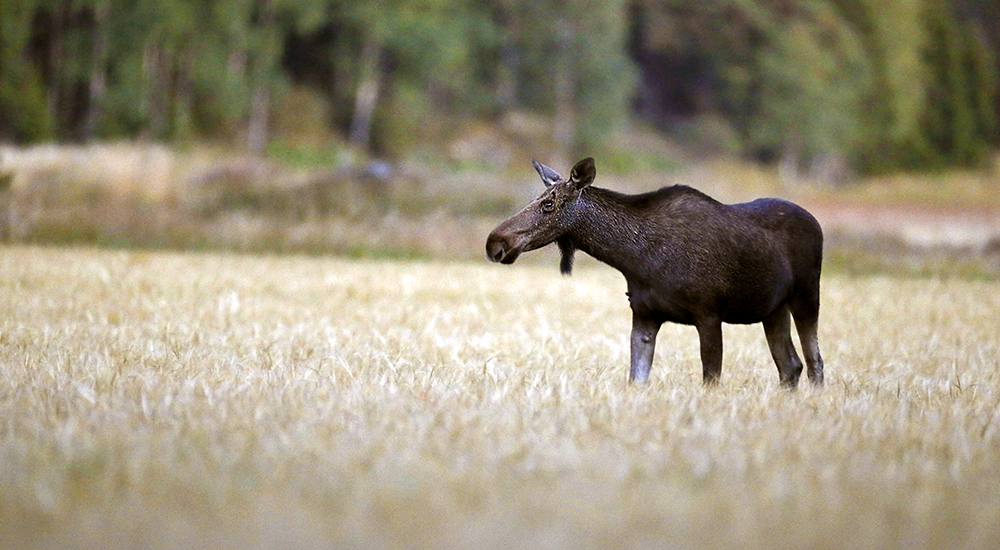Fingrid manages a network of more than 14,000 kilometres of power lines all over Finland. Power line corridors range in width from 26 metres to more than 100 metres. Fingrid does not own the land under the power lines – the landowner’s permission is always required to use the land.
Power line corridors can offer tens of thousands of hectares of prime gamekeeping space, as long as permits can be agreed. For many hunting clubs, the land under power lines may be a significant area for gamekeeping.
Fingrid clears power line areas every 5–8 years in order to keep the corridors open and ensure that vegetation does not grow higher than three metres. The aim is to put power line corridors to effective use in various ways so that they do not become a wasteland. One such use is as feeding grounds for gamekeepers.
Autumn and winter feeding on wildlife fields
Old fields or easily convertible mineral land areas under power lines are highly suitable for use as fields for wildlife. They can be used to cultivate crops such as clover and oats, which thrive in low-nutrient soil. Cale crops require more fertiliser.
Wildlife fields provide nutrition during the autumn and winter, particularly to cloven-hoofed animals and hares. When the area is mowed in the late summer, a thick and tasty grass or sprout field grows in the autumn.
As the trees are kept low and bush-like due to clearing along power line corridors, there are plenty of woody stems for elk to eat in the winter. Power line corridors are good places for aspen, willow, rowan, birch and pine trees. When elk eat under power lines, they are not eating saplings.
The surrounds near towers located in fields are also suitable for use as wildlife feeding fields, as it can be difficult to harvest crops between the feet and guys of towers.
Wetlands and protection for birds
A small, excavated forest pond can provide an important watering hole for many forest animals. During the hottest days of summer, watering holes are hard to find, so a bush wetland excavated or dammed in a dip could become an important place for many species to drink and find protection. Wetlands are nesting places for species such as the common teal and the goldeneye.
The low bushes in power line areas also provide protection for other species of bird. Diverse areas containing fields, strips of forest land and bushes in power line corridors provide habitats for species such as the grey partridge. Wildlife fields in power line corridors, managed meadows, traditional biotopes and pastures are nice to look at. They increase the value of areas for local people as well as for hunters, and they also offer habitats for rarer types of butterflies and pollinators.
Gamekeeping can also be combined with other useful activities. Power line corridors can be used to grow Christmas trees or berry bushes or set up beehives. It is advisable to agree on such uses with Fingrid in advance so that Fingrid is aware of this during the vegetation management in the areas. Gamekeeping, agricultural enterprises and power lines make a good combination.






